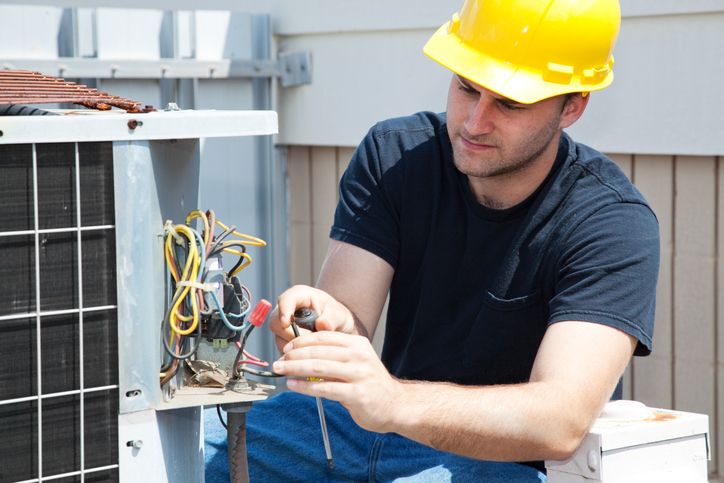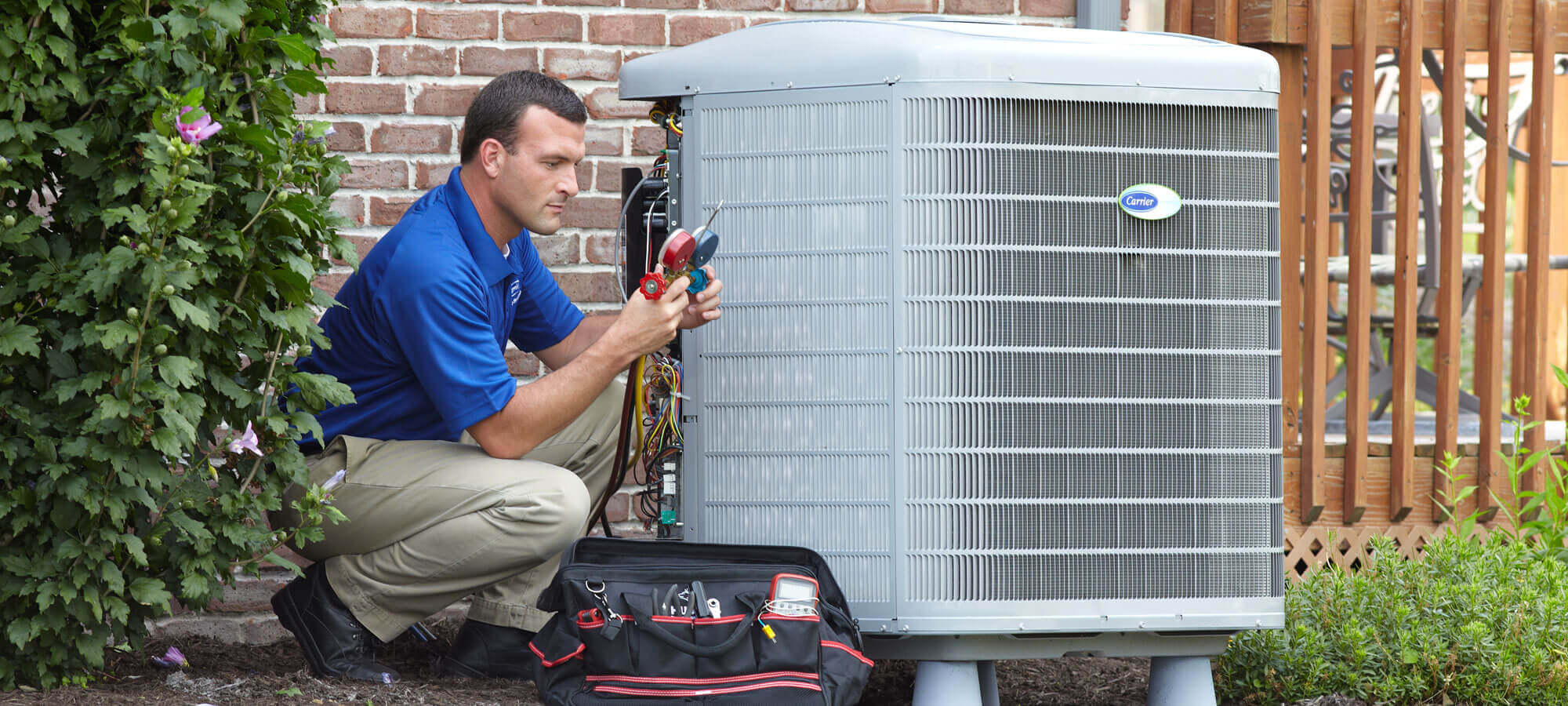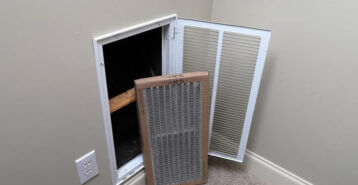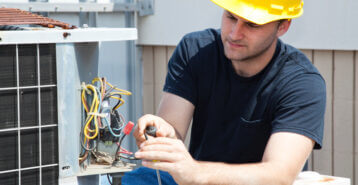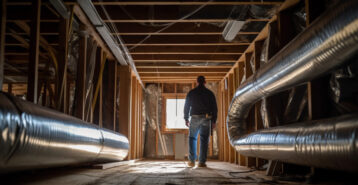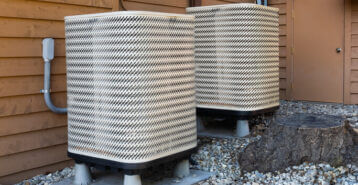Blower motor replacement cost is a critical consideration as the blower motor is the component that drives your HVAC unit’s fan, circulating hot or cold air throughout your home. There are several types of blower motors including variable, dual, and single speed; each plays a pivotal role in home air circulation, with variable and dual speeds providing continuous airflow and single speeds activating based on thermostat demands.
While routine maintenance can extend the lifespan of your blower motor, replacement is often inevitable, especially in older systems. Modernize has developed a cost guide to aid homeowners in understanding the financial implications and procedural details involved when a blower motor needs replacing in either an AC unit or furnace.
Average Costs of Blower Motor Replacement
The cost to replace a blower motor can vary greatly but averages between $550 and $650. Homeowners in newer residences may have HVAC systems that are under warranty, so depending on the manufacturer’s warranty terms the work may be fully covered, or homeowners will have to only pay for the labor costs required to complete the repair.

Here’s a cost breakdown by parts and labor.
Labor
Homeowners with HVAC systems that are under warranty can expect to pay between $200 and $400 for labor for a licensed technician to complete the repairs. Labor is roughly the same cost for repairs on blower motors that aren’t covered under the manufacturer’s warranty.
Parts
Oftentimes, the blower motor doesn’t need to be replaced and new parts are needed to get the system running properly.
- Blower wheel: $25–$300
- Bearings: $20–$200
- Pulley: $30–$250
- Housing: $90–$300
- Shaft: $75–$200
- Motor control module: $25–$850
Cost for parts also can vary by geographical region and HVAC contractor.
If you opt for a total blower replacement, you’ll pay more for an energy-efficient variable speed blower versus a single-stage motor that has just one operating speed. Variable speed blower motors offer increased energy efficiency because they adjust operating speed to best meet the cooling demand set by the thermostat. Single-speed motors, meanwhile, turn on and run at 100% and then turn off when the desired room temperature is met. Cost for a single-stage blower motor could run between $300 and $900, while cost for a variable-speed blower could be between $600 and $1,500. Remember, though, the higher upfront costs for a variable-speed blower motor will be offset by reduced monthly energy bills.
Factors Affecting Blower Motor Replacement Costs
The average cost of replacing a blower motor depends on a wide variety of factors, including size, brand, horsepower, labor, and whether your unit is covered by a manufacturer’s warranty.
Here are some primary considerations that affect blower motor replacement costs.
Type of Blower Motor
Common types of blower motors include:
- Single speed. Single-speed motors offer the lowest replacement costs at approximately $300-$900, but homeowners will spend more in monthly utility bills since these types of motors don’t offer the same energy efficiency as dual- or variable-speed motors. If you expect to be in your home a decade or more, a more energy-efficient blower motor is likely a better replacement option.
- Dual speed. Dual-speed blower motors are a mid-range replacement option. They straddle the line between single and variable-speed motors and offer multiple operating speeds. Benefits include lower operating noise, and better energy efficiency. Costs are between $300-$1,100.
- Variable speed. The premium option for blower motor replacement will cost approximately $600-$1,500.
Brand and Model Compatibility
Homeowners should match their blower motor replacement with the existing furnace or AC brand to ensure 100% compatibility. Cost vary by manufacturer:
| Brand | Blower Motor Cost |
|---|---|
| Carrier | $100–$1,600 |
| Lennox | $150–$1,500 |
| Rheem | $250–$900 |
| Trane | $180–$1,750 |
| York | $140–$1,800 |
Labor Costs
Labor costs for HVAC contractors can vary greatly. Some charge hourly, while others charge a flat fee. Some implement trip charges, while some bake travel costs into the overall flat fee. Hourly rates can vary between $75 and $150, and it will likely take an experienced professional HVAC technician between 2-3 hours to diagnose and replace the blower motor in your furnace or AC unit.
Warranty and Service Plans
Repairs on HVAC systems that are under the manufacturer’s warranty will cost much less than systems that are out of warranty. Repair costs for blower motors that are under warranty could run between $150-$250.
Blower Motor DIY vs. Professional Replacement
Homeowners may be tempted to replace the blower motor in their HVAC themselves to save money, but there are many reasons why hiring a professional may be the best option.
Hiring a Pro for Blower Motor Replacement
A professional HVAC technician can analyze your entire system and properly diagnose any issues, including problems with the blower motor. However, there could be other reasons why the blower won’t turn on, such as a faulty capacitor. Hiring a licensed HVAC technician ensures you aren’t throwing money at the wrong problem.
The technician will perform all necessary repairs to ensure your blower motor and HVAC system is running properly, as well as any required maintenance to your system that can help prevent problems in the future. Lastly, many companies have a labor warranty of one year for any work performed on your system, so you should be covered if the problem resurfaces.
DIY Blower Motor Replacement
Although you can save money by replacing a blower motor yourself, there are many reasons why it might not be in your best interest to take on this rather complicated DIY job.
For starters, if you don’t know what a squirrel cage is, you probably should make the call and hire a licensed HVAC technician. For the record, the squirrel cage is the part of your blower motor that looks like a hamster wheel.
Replacing a blower motor isn’t a complicated repair job for an experienced professional, but for a novice homeowner, the job may stretch your DIY capabilities. You’ll also need a wide range of specialty tools, such as 12-volt drill and impact driver and multimeter, and miscellaneous hand tools. Another major consideration is your system’s warranty. Manufacturers typically provide 5- and 10-year warranties on various mechanical systems in your AC unit and furnace. Self-performing any repair work voids any existing HVAC warranty.
For most homeowners, DIY work on your furnace should be limited to routine maintenance such as changing filters and making sure the outside AC unit is clear of dirt and debris.
4 Signs You Need Blower Motor Replacement
A faulty blower motor can present in a variety of ways. Here are four signs that you may need blower motor replacement:
- Weak air flow. Low air flow can stem from many different issues with your blower motor, such as bearings beginning to fail or problems with the unit’s capacitor.
- No air flow. If no air is circulating at all, your motor has likely failed – though the problem could be something else.
- Odd noises. If you can hear your motor screeching, thumping or making other odd noises when the heat of cooling functions turn on, your blower motor could have a bad belt, faulty bearings, or similar mechanical issue.
- Skyrocketing energy bills. A poorly functioning blower motor may be working overtime to meet the heating or cooling demands set by the thermostat. Similarly, a variable- or dual-speed blower motor may be locked into one speed and not performing as efficiently as possible.
In all instances, a licensed HVAC professional can provide the correct diagnosis of your blower motor.
Pros and Cons of Blower Motor Replacement
The blower motor on your furnace should last between 10 to 20 years. Here are some benefits and drawbacks of replacing your system’s blower motor.
-
Pros
- Enhanced Efficiency
- Cost-Effective
- Improved Airflow
-
Cons
- Not for Old Furnaces
- High Cost Potential
- Could Be Faulty Parts
Pros of Replacement
- Increased energy efficiency and lower utility bills
- Less costly than replacing the entire furnace
- Better airflow for increased homeowner comfort
Cons of Replacement
- Might not be best option for older, outdated furnaces
- Potential for a high repair bill
- Problems may just be from faulty parts such as bearings or belt
How to Save on Blower Motor Replacement Costs
The best way to save money on blower motor replacement is to avoid replacing the unit through routine preventative maintenance.
Homeowners should have their systems professionally maintained each year. Cost for annual AC and furnace maintenance averages $200, but the maintenance work that HVAC technicians perform can help ensure your system functions properly and extends the longevity of critical components such as the blower motor.
Homeowners should also routinely change the filters in the HVAC system. Dirty and clogged filters impede the performance of your HVAC system and make moving components such as the blower motor work harder. Standard 1-inch-thick filters should be changed every three months at a minimum, and more often if you live in arid, dusty areas or parts of the country with high pollen counts as these particulates can prematurely clog your system’s air filters.
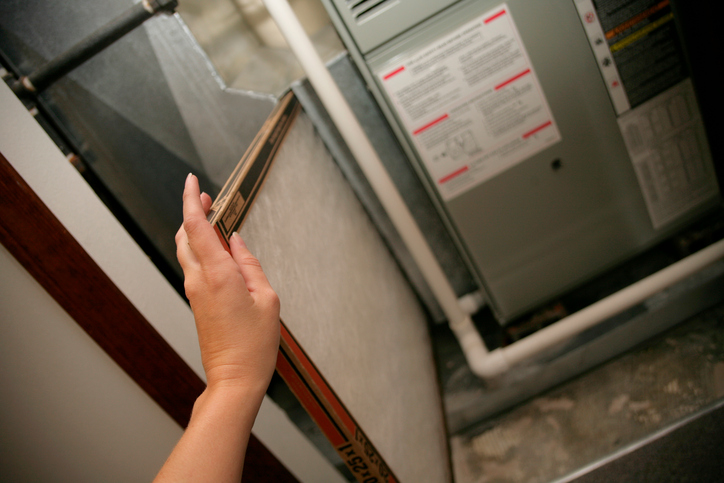
Homeowners who increase the energy efficiency of their HVAC systems may qualify for tax credits from the U.S. Department of Energy’s ENERGY STAR program.
Conclusion
Replacing a blower motor is a complicated DIY task for most homeowners, but routine work for a licensed HVAC technician. Although preventative maintenance can significantly extend the life of your HVAC system’s blower motor, it may need replacing if you’ve noticed your energy bill skyrocket or strange sounds are coming from the furnace.
Hiring a licensed HVAC company for blower motor replacement ensures that any problems with your system are properly diagnosed, and subsequent repair work is done correctly. You’ll also ensure you don’t void any existing warranty that is in place by the unit’s manufacturer.
Compare top-rated HVAC pros in your area.
Read real homeowner reviews, explore qualifications, and view promotions. Modernize makes it easy to browse professionals and find one that will be perfect for your project.
